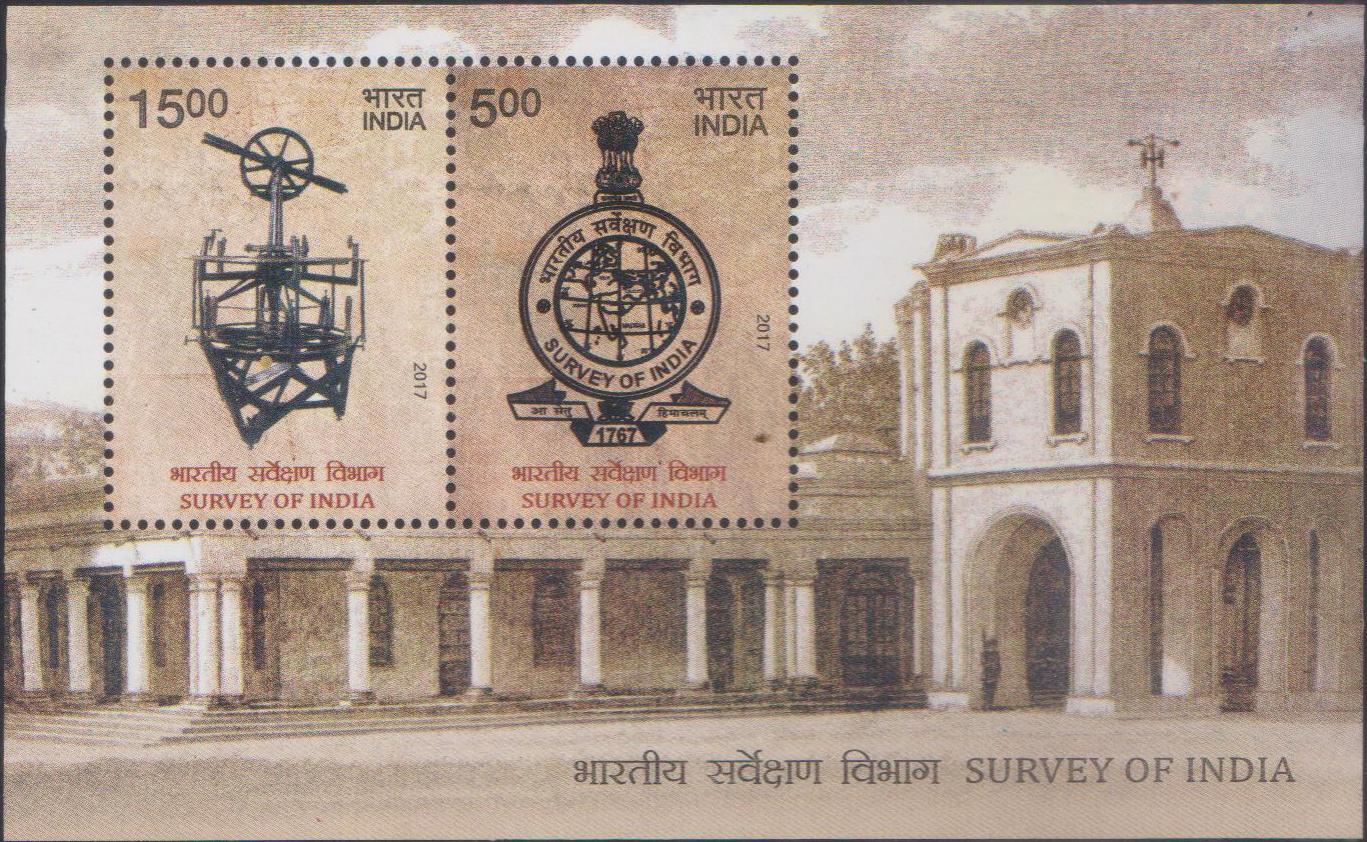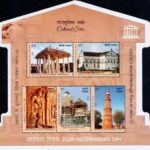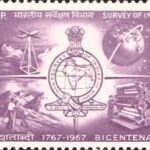
Archaeological Survey of India 2011
A set of 2 nos of commemorative postage stamps on the 150th Anniversary of the Archaeological Survey of India (ASI), an Indian government agency under Ministry of Culture, responsible for archaeological research, conservation and preservation of cultural monuments :
Issued on Dec 20, 2011
Issued for : Despite the challenges and limitations, the ASI is serving the country credibly. On the occasion of its completing 150 years of existence, the Department of Posts commemorates the event with the issue of a set of two postage stamps.
Credits :
Stamp/FDC : Kamleshwar Singh
Cancellation : Alka Sharma
Type : Miniature Sheet, Mint Condition
Colour : Multi colour
Denomination : 500 & 2000 Paise
Stamps Printed : 0.4 Million each (0.1 Million each to proponent)
Miniature Sheet : 0.1 Million
Printing Process : Wet Offset
Printer : SPP Hyderabad
About :
- Archaeology, even as it engages with the human past, is a modern pursuit that fosters productive harmony between the society and its heritage. Learning from the peoples of the past and their relationships with the environment is nowhere more relevant than in India, a continent like country with its bewildering diversities and contradictions, and which is often described as living simultaneously in different centuries.
- The task of protecting the cultural heritage of the nation has been entrusted to the Archaeological Survey of India (ASI), an organization functioning under the Department of Culture of the Government of India. Activities of the ASI include archaeological research, scientific analysis, excavation of archaeological sites, conservation of protected monuments and areas of national importance, maintenance of the museums and regulation of legislation related to antiquities and art treasures.
- Archaeological investigations in India began towards the end of eighteenth century, the initial efforts having been inspired by the accounts of travellers who visited this wonder land, till then little known. The arrival of Sir William Jones and the subsequent formation of the Asiatic Society in 1784 gave a major fillip to the discipline. These early archaeological initiatives culminated in the setting up of the ASI in 1861. Legendary archaeologists like Alexander Cunningham, John Marshall and Mortimer Wheeler contributed to the emergence of the Survey as a respected and professionally competent organization.
- The distribution of archaeological landmarks in India is balanced in time and space. They are from different ages, and spread throughout the length and breadth of the country. The ASI has been conscious of the fact that each monument mirrors the power of assimilation and the traits of Indian soil and cultures emerging out of it. It has internalized the duty assigned to it, that of preserving such a heritage for future generations. The heritage sites and monuments under ASI’s charge are of an immense variety, and include palaces, temples, mosques, churches, monasteries, stupas, step-wells, megaliths, pillars, kos minars, tombs, cemeteries, rock shelters with prehistoric paintings and rock-cut caves, belonging to prehistoric, protohistoric, historic, medieval and colonial periods. These monuments and sites are located in different climatic zones, ranging from the snow-bound heights of the Himalayas to coastal areas of tropical weather.
- The ASI is, at times, called upon to face challenges of complex nature requiring special efforts with regard to the preservation of cultural heritage, when development programmes are in progress. Such development schemes include construction of dams and hydro-electric projects, establishment of large industries, urban development projects etc., which could endanger the monuments. In the recent past, village population gradually moving to the cities and towns for better subsistence has posed problems to the monuments to a great extent. Instances of encroachment at the protected monuments and large scale construction of buildings of commercial and residential nature have posed threats to their very existence.
- Text : P.N. Ranjit Kumar (Based on the inputs furnished by the proponent).










[…] Text by courtesy : Archaeological Survey of India. […]
[…] Text : Based on the material furnished by Ministry of External Affairs, Government of India and website of Archaeological Survey of India. […]
[…] temple is under the care of the Archaeological Survey of India from 1946 and is being maintained as a protected monument of national importance. Recognising its […]
[…] buildings of India Post which has been given the status of “Heritage Building” by the Archaeological Survey of India and is in close proximity to the historical Red Fort and Chandni Chowk. Opened in 1855, the Post […]
[…] 1903, he accepted a job in Government of India‘s Archaeological Department as a draughtsman and Photographer. Moreover, Phalke was interested in starting his […]
[…] Delhi: Agrasen ki Baori (also known as Ugrasen ki Baori), designated as a protected monument by the Archaeological Survey of India (ASI) under the Ancient Monuments and Archaeological Sites and Remains Act of 1958, is a 60-meter […]
[…] World Heritage List in 1983. It is one of sixteen World Cultural Heritage sites maintained by the Archaeological Survey of India […]
[…] their shared heritage of Buddhism and Cham traditions. The Government of India commissioned the Archaeological Survey of India for restoration and conservation of 3 Group of temples in My Son sanctuary of Vietnam. The […]